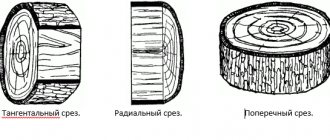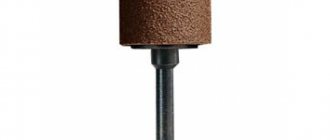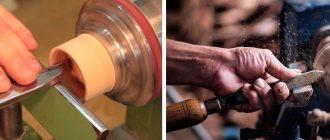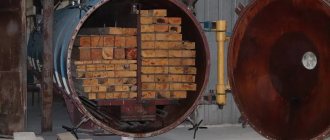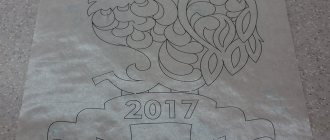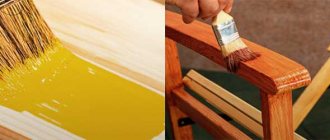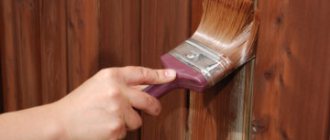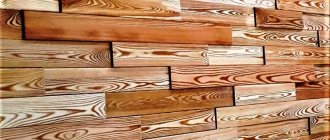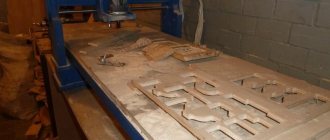Puttying work can be carried out with any type of wood, at any degree of wear of the material. Wood is puttied mainly to eliminate defects on the surface, but this is not the main function of wood putty.
Among the advantages of using the mixture are the following:
- Hydrophobic properties. Putty prevents moisture from penetrating into the wood structure.
- The mixture can be used to seal deep cracks, eliminate damage from poor wood processing, and restore wooden decorative elements.
- Parquet mortar has a high level of adhesion. Putty applied to the floor easily penetrates cracks and hides surface defects.
- After the mixture dries completely, it becomes transparent and does not change the natural appearance of the wood structure.
Why putty wood?
Wood, especially softwood, is easily damaged. Scratches, dents, and chips form on its surface. And fluctuations in humidity and temperature cause it to either swell or dry out with the formation of cracks. Wood putty for interior work helps to mask these defects if they appear in the house - on the floor, doors, furniture. Similar compositions can be used to repair street structures, but they must have additional properties: not be destroyed by ultraviolet radiation and rain, and can easily withstand freezing and thawing.
But types of putty are not divided only into internal and external; they may differ in other characteristics. Wood putty, which perfectly fills holes from fasteners, is not suitable for restoring an antique chest of drawers or leveling a parquet floor, and for bathrooms and kitchens you will need a composition with water-repellent properties.
Restoration of an old chair Source make-self.net
Choose putty in accordance with the tasks that it must solve:
- filling cracks and irregularities, smoothing the surface;
- sealing deep cracks with strengthening the structure;
- the formation of a protective layer that protects against moisture and dirt;
- color alignment and renewal of aged wood surface;
- preparation for painting or pasting with increased adhesive properties.
Depending on the type of work to be done, wood putty with certain properties is selected: waterproof, quick-drying, colored, etc. But its main qualities should be good ductility and compatibility with wooden surfaces.
conclusions
Initially, you need to prepare the workplace, cover everything with oilcloth, stick on scratch tape, and cover it with newspapers so as not to cover the good surface. Next, put on gloves, safety glasses, and use a respirator if necessary.
Putty should be applied to a clean surface , any remaining paint, putty, plaster and other undesirable substances. It is necessary to remove the metal parts so that they do not corrode and the red color does not appear. Next, prime everything.
Now is the time to use wood putty in tubes or special containers. It is applied in a thin layer using an iron or rubber spatula. The layer thickness should not exceed 2-3 mm.
Types of wood putty
According to the release form, putties are ready for use in the form of a liquid or paste-like homogeneous mass. But some types are produced in the form of a dry powder mixed with water, or two components that are mixed immediately before use.
You can also find special-purpose formulations on store shelves. This can be wood putty for filling deep defects, for parquet, for filling OSB joints, for furniture restoration, etc.
Universal two-component putty Source ral1.ru
But these products are classified according to their composition: the type of binder and base. The base can be water or a solvent, which is used as a variety of natural and synthetic oils, adhesives, nitrovarnishes, and resins.
Water based
Water-based putties have almost no odor, and this quality is often decisive when choosing a repair composition for use in residential areas of the house. They are intended mainly for internal use. Acrylic, latex and gypsum putties are made on a water basis.
- Acrylic wood putty is very flexible and easy to apply.
Main advantages: resistance to moisture and temperature changes, minimal shrinkage upon drying. It is mainly used for final leveling of surfaces, creating an even, smooth layer. It is impossible to apply it at a depth of more than 2-3 mm, since the material will crack when drying, so they try not to use acrylic compounds to seal rough and deep defects, or do this in several stages, drying each thin layer.
Acrylic putty for wood Source prom.st
- Latex putty is universal in use.
Like acrylic, latex putty is an aqueous dispersion of polymer resins and also has good elasticity and water-repellent properties. It can be used to seal joints between panels, level various substrates, including laminate, MDF doors, and veneered surfaces. You just need to choose the composition of the desired shade.
Polymer composition for sealing joints Source kd.market
See also: Catalog of companies that specialize in finishing materials and related work
- Gypsum putty - only for dry rooms.
When choosing what to putty on a wooden surface using the most budget-friendly materials, you can choose gypsum putty. But it's better not to do this. It has poor adhesion to wood, which, taking water from the wet solution, swells and increases in volume. When it dries, the plaster will simply fall off in pieces.
This composition can only be used on a surface protected by a waterproof layer, for example, several layers of PVA glue. But the game is not worth the candle; it is better to immediately use the appropriate composition. Or apply gypsum putty as a finishing layer on a previously puttied surface. But only in dry rooms with constant heating and not on the floor.
It is better to choose mixtures with polymer additives Source dd-stroi.ru
Solvent based
This category includes compounds characterized by a pungent odor and toxicity (with the exception of oil-based putties). Harmful volatile substances are released into the air until the product dries completely, so it is not advisable to use them in enclosed spaces. These are excellent wood fillers for exterior use as they are resistant to all weather conditions.
However, high adhesion and quick drying are very attractive characteristics for the consumer, so solvent-based compositions are also used for interior work, especially in rooms with high or variable humidity. But subject to certain conditions: the use of protective equipment during work, the removal of people and animals from the house, and thorough ventilation.
If there is a large amount of work to be done, it is necessary to use PPE Source prodez.ru
- Epoxy putties are the most durable.
These are one- or two-component compositions that can be applied in a thick layer at once. They are very convenient for repairing wooden stairs, window frames and other outdoor structures with serious and deep defects. By filling them, the epoxy composition not only levels the surface, but also gives the product additional strength. And when completely applied to the surface, it creates a durable protective layer that does not allow moisture to pass through and is not destroyed by sunlight and chemicals. Sands well after drying. This is the best wood putty for painting with covering compounds. But impregnations and stains will not be able to penetrate the wood through an impermeable layer, so if you have chosen this method of decoration, it is better to putty cracks and chips with another means.
Two-component epoxy putty Source grantauto.ru
- Polyester and nitro putties are the most toxic.
The very strong chemical smell of such materials limits their use for repairing wooden structures in residential buildings. But they are ideal for external work - they dry quickly, adhere well to the tree, protect it from precipitation and all kinds of pests.
Two-component polyester putty with wood dust Source bormaexpert.com.ua
Main factors for choosing putty
The selection criteria are quite multifaceted, but the main ones are:
- maximum level of adhesion (the property indicates the ability of the putty to adhere to the surface); elasticity is important during application. The softer and more flexible the material, the easier it is to work with. After hardening, this affects the integrity of the coating and its resistance to cracking;
- period for acquiring maximum strength;
- environmental friendliness of raw materials. Some chemical components can release toxins; this should be avoided even at the stage of choosing a material for the floor, because the well-being of the buyer may depend on which one the buyer chooses;
- the finishing putty must have a fine grain fraction to ensure a perfectly even structure.
It is not only the type of material used that matters, but the method of application. Almost all types of finishing, be it wallpapering, varnishing or painting, require the wood to be perfectly even, so the mixture must be applied in neat, thin layers.
Homemade putties
Putty for eliminating defects on wooden surfaces is produced by almost all manufacturers of paint and varnish products. But it’s easy to prepare it yourself from simple ingredients. Homemade compounds are used when you need to repair a couple of cracks, because of which you don’t want to waste time going to the store and buying material, most of which will remain unused. Or vice versa - when there is a large amount of work to be done with considerable costs for professional tools.
Adhesive
An excellent wood putty is made from crushed chalk and PVA glue. To make the mixture homogeneous, the chalk must be sifted through a fine sieve, and then poured in small portions into a container with glue and stirred. You should end up with a mass that resembles toothpaste in consistency. An excessively thick mixture can be diluted with a small amount of water.
If you need to prepare a lot of putty, then it is better to use a mixer to mix it, since it is difficult to mix a large volume by hand.
Color
It is necessary to choose the right putty color, as there are options that are not at all suitable for certain types of work.
For example, if you plan to open the wood with varnish, you cannot seal cracks in the texture using white or black wood putty, otherwise the treated areas will be very noticeable and the aesthetic appearance will be lost. But when painting the surface, it does not matter what color the mixture will be.
It is best to choose a material that is similar in color to the color of wood.
So, wenge wood putty is quite suitable for oak, but for light varieties it will look awkward.
Video description
The chalk in this recipe can be replaced with wood flour or any dry finishing putty, as shown in the video:
On water-based varnish
If you use water-soluble varnish as a base instead of glue, the putty will be stronger. Especially when adding small sawdust or wood flour to it. The consistency should be made a little thinner and the mixture should be allowed to stand for a day so that the wood components absorb moisture, after which the mixture acquires normal thickness. It can be used to putty wood with serious defects.
On nitro lacquer
If you need waterproof wood putty for exterior use, instead of water-based putty, use nitro varnish, for example, NTs-218. And mix it with chalk and wood dust. This must be done outdoors due to the strong smell of the varnish. It is also better to use for exterior work or renovation of non-residential premises.
Popular manufacturers
When doing the work yourself, you need to competently approach the issue of choosing the composition. Not only by components, but also by manufacturer.
Nowadays there are several leading manufacturers of putty mixtures.
In my opinion, the best putty for exterior woodwork is produced by the following companies:
- Lakra;
- Tikkurila;
- VGT;
- Smes;
- Rainbow;
- Bolars;
- Extra Profilux;
- Parade;
- Belinka;
- Eurotex.
If you think that a brand is superfluous here, or you want to add your favorites, leave a comment. We will definitely discuss this issue.
Rules for using putty
In any work, to obtain a satisfactory result, it is necessary to follow the technology and the order of its implementation. Depending on the composition and purpose, putties may have different rules for use, so careful reading of the instructions is mandatory. But there are general rules for all its types.
Color selection
Before you putty the wood, you may need to choose the color of the repair mixture. This item can be omitted if the surface will be painted or covered with finishing materials. In other cases, the selection of shade is very important.
All water-based putties can be tinted using special pastes or liquid concentrated dyes. Therefore, if you cannot find the material of the desired shade, you can buy white putty and independently adjust it to the shade of the wood.
Palette of acrylic putties Lakra Source megastroy32.ru
Preparation for repair
Regardless of what material is used to seal cracks, it will only hold if preparatory procedures are carried out, namely:
- Removing dirt from crevices - you need to take a stiff brush with long bristles and walk along the crevice several times. This will help remove the damaged layer of wood, dust, dirt and bacteria that are present there. A vacuum cleaner, which is convenient for handling even the smallest cracks, will help remove fine dust.
- Disinfection - it is important that bacteria do not grow in the crevice, which will subsequently cause rotting of the wood. For this purpose, the floor at the site where the material is applied is treated with any antiseptic. Chlorhexidine and copper sulfate have proven themselves well. After treatment, you need to allow several hours to dry completely.
- Expanding the gap - if, when removing dirt, the wood begins to crumble, it is necessary to remove the entire loose layer until strong and durable fibers appear. Otherwise, the material will not have the necessary adhesion to the wood, and cracks will appear again.
During work, it is recommended to ensure that the floor has a minimum load and maximum evenness of the surface being treated. All heavy furnishings should be removed from the room during the renovation.
Source
Puttying a wooden surface to seal floor cracks under linoleum and parquet
Sanding a wooden floor under laminate is done with a large volume of mixture. It is optimal to use putty with PVA glue and sawdust or ready-made mixtures.
- Before puttying, the floors are cleaned of old finishing materials, and loose boards are secured with self-tapping screws.
- The slats are fixed on the base maintaining a gap of 35-50 cm, the elements are used as beacons.
- The symmetry of the slats is checked with a building level.
- The mixture is applied between the beacons in 2-3 layers. Each layer is dried.
- After the coating has dried (48 hours), grouting is performed.
- At the final stage, painting or laying of a decorative coating is performed.
